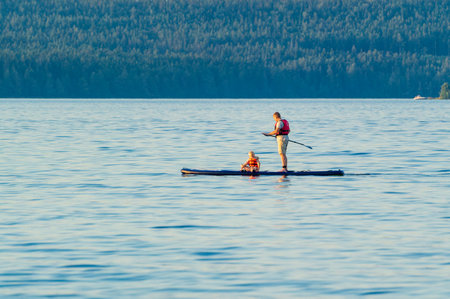1. Understanding Saltwater Fishing Reel Types
When it comes to saltwater fishing, choosing the right reel can make all the difference. Whether youre casting from the beach, heading miles offshore, or exploring shallow coastal waters, each environment calls for a different type of reel. Lets break down the main types: surf reels, offshore reels, and inshore reels. Each one is built with specific features to handle different conditions and target species.
Surf Fishing Reels
Surf reels are designed for long-distance casting from the shoreline. They typically have a larger spool to hold more line, allowing you to reach fish beyond the breakers. These reels need strong drag systems to battle powerful fish like striped bass or red drum that often fight hard in the surf.
Offshore Fishing Reels
Offshore reels are built tough for deep-sea fishing where big game like tuna, marlin, and mahi-mahi roam. These reels are heavy-duty with high line capacity and incredibly strong drag systems. They’re made to withstand high-pressure fights and harsh saltwater conditions far from shore.
Inshore Fishing Reels
Inshore reels are more lightweight and versatile, perfect for fishing near bays, estuaries, and mangroves. Theyre ideal for species like snook, redfish, or speckled trout. These reels offer precision and control, without needing the heavy-duty specs of offshore gear.
Key Differences at a Glance
| Reel Type | Size | Drag Capacity | Line Strength | Typical Environment |
|---|---|---|---|---|
| Surf Reel | Medium to Large | Moderate to High (15-30 lbs) | 15-40 lb test | Beaches, shorelines with waves and currents |
| Offshore Reel | Large to Extra-Large | High to Extreme (30-100+ lbs) | 50-130 lb test braided or mono | Deep sea, open water far from coast |
| Inshore Reel | Small to Medium | Low to Moderate (10-20 lbs) | 8-20 lb test | Bays, flats, estuaries close to land |
The Right Tool for the Job
No matter your skill level or target species, using a reel suited for your environment ensures better performance and more enjoyable fishing trips. From fighting massive tuna offshore to landing slot-size redfish in shallow water, picking the right reel is step one toward success on the water.
2. Top Features to Look for in a Saltwater Reel
When youre choosing the right saltwater fishing reel—whether its for surf casting from the beach, heading offshore for big game, or targeting redfish and snook inshore—there are a few key features you should always consider. Saltwater environments can be tough on gear, so knowing what makes a reel durable and effective is essential.
Corrosion Resistance
Saltwater is harsh and can quickly damage reels that arent made with the right materials. Look for reels made with corrosion-resistant materials like anodized aluminum, stainless steel, or carbon composites. Sealed components also help prevent salt and sand from getting inside the reel.
Common Corrosion-Resistant Materials
| Material | Corrosion Resistance | Common Usage |
|---|---|---|
| Anodized Aluminum | High | Body & spool construction |
| Stainless Steel | Very High | Bearing systems, internal gears |
| Carbon Composite | Moderate to High | Lightweight reel frames |
Gear Ratio
The gear ratio determines how fast you can retrieve your line. A higher gear ratio means quicker line retrieval, while a lower ratio gives more torque for fighting big fish. For example, inshore anglers might prefer a 6.2:1 ratio for quick action, while offshore anglers may opt for something like 4.9:1 for extra power.
Recommended Gear Ratios by Fishing Type
| Fishing Style | Recommended Gear Ratio | Why It Works |
|---|---|---|
| Surf Fishing | 5.3:1 – 6.2:1 | Balanced speed and power to handle long casts and varied species |
| Offshore Fishing | 4.1:1 – 5.0:1 | More torque to fight large pelagic species like tuna or marlin |
| Inshore Fishing | 6.0:1 – 7.0:1 | Fast retrieval ideal for active species like redfish or speckled trout |
Drag System Quality
A smooth and strong drag system is critical when battling powerful saltwater fish. Look for reels with sealed drag systems using carbon fiber washers or other high-quality materials that provide consistent pressure without jerking.
Types of Drag Systems to Consider:
- Carbon Fiber Drag: Durable and smooth under heavy load.
- Cork Drag: Classic feel but less common today.
- Dura-Drag (by Penn): Designed specifically for big game and offshore use.
Build Quality and Design
A solidly built reel will hold up better over time, especially with frequent saltwater exposure. Features like one-piece aluminum frames, CNC-machined parts, and precision-cut gears add durability and improve performance. Lightweight materials are also important if you’re casting all day from shore or wading through flats.
Quick Checklist Before Buying a Saltwater Reel:
- Is it made with corrosion-resistant materials?
- Does the gear ratio suit your style of fishing?
- Is the drag system sealed and smooth?
- Is the frame sturdy and lightweight?
Selecting the right reel depends on where you fish and what species youre targeting, but keeping these core features in mind will help you get the most out of your saltwater adventures.

3. Best Surf Fishing Reels on the Market
Surf fishing is all about distance, durability, and handling tough beach conditions. Whether youre casting into the waves for striped bass on the East Coast or targeting surfperch along the Pacific shoreline, having a reliable reel that can handle salt, sand, and long casts is key. Below, we’ll take a look at some of the most popular surf fishing reels used by U.S. anglers and why they stand out.
Picks for Top Surf Fishing Reels
These reels are known for their excellent casting distance, corrosion resistance, and smooth performance in harsh coastal environments.
| Reel Model | Type | Key Features | Why Anglers Love It |
|---|---|---|---|
| Penn Battle III DX | Spinning Reel | Full metal body, CNC gear tech, sealed bearings | Strong build and great value for heavy-duty surf fishing |
| Daiwa BG MQ | Spinning Reel | Monocoque body, waterproof drag system | Smooth drag with powerful retrieve; handles big fish well |
| Shimano Ultegra XTD | Long Cast Spinning Reel | Slow oscillation system, AR-C spool design | Exceptional casting distance—perfect for reaching deeper waters from shore |
| Van Staal VR Series | Bail-less Spinning Reel Option Available | Fully sealed body, lightweight aluminum design | Built like a tank—ideal for serious surf anglers who fish in all conditions |
| Okuma Rockaway Surf | Spinning Reel (Budget-Friendly) | CFR rotor technology, long cast spool design | A solid choice for beginners or those looking to upgrade on a budget |
Main Considerations When Choosing a Surf Reel
Casting Distance Matters Most
You want a reel that helps you get your bait past the breakers. Look for features like long cast spools and slow oscillation systems that lay line evenly to improve distance.
Tough Against Sand and Saltwater
A sealed drag system and corrosion-resistant materials are must-haves. Sand can ruin a reel fast if its not built to keep it out.
Smooth Drag and Strong Retrieve Power
You never know what youll hook from the surf—could be a small bluefish or a big red drum. A smooth drag helps tire out bigger fish without breaking your line.
Pro Tip:
If you’re fishing in rough surf or windy conditions often, consider going with a bail-less reel like the Van Staal VR to avoid issues with line twist and mechanical failure.
The best surf fishing reels offer a mix of long-distance casting ability and toughness against the elements. Depending on your budget and how often you hit the beach, theres an option out there thats right for you.
4. Top Offshore Reels for Big Game Fishing
When it comes to offshore fishing, youre dealing with some of the biggest and strongest fish in the ocean—think tuna, marlin, sailfish, and grouper. That means you need a reel that can hold up under serious pressure. Offshore reels are built tough, with high drag power, solid construction, and plenty of line capacity to battle those deep-diving giants.
What Makes a Great Offshore Reel?
Here are the key features to look for when choosing an offshore reel:
- High Drag Capacity: You’ll need at least 30-50 lbs of drag for big game species.
- Corrosion Resistance: Saltwater is brutal on gear, so look for sealed components and anti-corrosion materials.
- Line Capacity: Offshore fish can run far—make sure your reel holds enough heavy line or braided backing.
- Durability: Solid metal body construction helps withstand the power of large fish.
Top Picks: Offshore Spinning and Conventional Reels
Here’s a quick comparison of some popular offshore reels that are trusted by anglers across the U.S.:
| Reel Model | Type | Max Drag (lbs) | Line Capacity (Mono) | Main Features |
|---|---|---|---|---|
| Penn Slammer IV | Spinning | 60 | 435 yds / 50 lb braid | IPX6 sealed body, full metal construction |
| Daiwa Saltiga | Spinning | 55 | 500 yds / 40 lb braid | Magsealed technology, ultra-smooth drag system |
| Shimano Talica II | Conventional | 60+ | 600 yds / 80 lb mono | Dual-speed gearing, compact & powerful frame |
| Avet EX Series | Conventional | 80+ | 800 yds / 100 lb mono | Twin drag system, machined aluminum frame |
Offshore Fishing Applications
The type of reel you choose depends on what youre targeting offshore:
Tuna and Marlin
You’ll want a conventional lever-drag reel with massive line capacity and super-high drag. These fish fight hard and long—gear like the Shimano Talica II or Avet EX is designed for these battles.
Sailfish and Mahi-Mahi
A high-speed spinning reel like the Daiwa Saltiga makes casting baits and reacting quickly to fast-moving fish much easier.
Deep-Dropping for Grouper or Snapper
If youre dropping baits down deep, youll benefit from a heavy-duty conventional reel with strong gears and cranking power.
Pro Tip:
If you’re new to offshore fishing, start with a versatile spinning setup like the Penn Slammer IV—it’s user-friendly but still has the power needed for big saltwater species.
No matter which reel you choose, make sure it’s matched properly with your rod, line strength, and target species. The right gear makes all the difference when fighting trophy-sized fish miles from shore.
5. Best Inshore Reels for Nearshore Species
When youre targeting nearshore favorites like redfish, snook, and speckled trout, you need a reel that combines lightweight comfort with serious saltwater durability. Inshore fishing often means casting all day long, so a reel thats easy on your arms but tough against corrosion is essential. Lets break down what makes a great inshore reel and highlight some top picks for American anglers.
What to Look for in an Inshore Reel
- Lightweight Design: Since inshore trips involve constant casting and retrieving, a lighter reel helps reduce fatigue.
- Precision Drag System: Smooth drag is crucial when fighting hard-pulling fish like snook or redfish near structure.
- Corrosion Resistance: Saltwater can be brutal on gear—look for reels with sealed components or corrosion-resistant materials like aluminum or carbon fiber.
- Line Capacity: You don’t need offshore-level line capacity, but having enough braid or mono for longer runs is still important.
Top Inshore Spinning Reels
The following table highlights some of the best spinning reels designed specifically for inshore saltwater action:
| Reel Model | Weight | Max Drag | Saltwater Protection | Best For |
|---|---|---|---|---|
| Daiwa BG MQ 2500 | 9.3 oz | 22 lbs | Magsealed & Aluminum Body | Redfish, Speckled Trout |
| Penn Spinfisher VI 2500 | 12 oz | 15 lbs | IPX5 Sealed Body & Spool | Snook, Redfish |
| Shimano Stradic FL 3000 | 7.9 oz | 20 lbs | X-Protect Water Resistance | Trout, Snook |
| Okuma Inspira ISX-30B | 8.2 oz | 13 lbs | CFR Rotor & Corrosion-Resistant Frame | Panfish, Light Redfish Action |
Baitcasting Options for Inshore Anglers
If youre more into precision casting around mangroves or docks, baitcasting reels offer excellent control and power. Theyre especially popular among anglers chasing redfish and snook using soft plastics or topwater lures.
Recommended Baitcasting Reels for Inshore Use:
- Lews Custom Inshore Speed Spool SLP: Built with a one-piece aluminum frame and saltwater-rated bearings.
- Daiwa Coastal SV TW 150: Designed specifically for saltwater use with a shallow spool and SV braking system.
- Shimano Curado K: While not exclusively inshore-focused, its durable enough for brackish waters and offers smooth operation for accurate casts.
Tackle Tip:
Avoid letting your inshore reel sit wet after a trip. Rinse it lightly with freshwater (never pressure wash), and let it dry completely before storing. This simple habit extends the life of even the best saltwater reels.
6. Conclusion: Choosing the Right Reel for Your Saltwater Adventure
Picking the best saltwater fishing reel doesn’t have to be complicated, but it does take a little know-how. Whether you’re casting from the shore, heading offshore for big game, or working the flats inshore, each style of fishing has its own set of reel requirements. Let’s break down what to keep in mind when choosing your next saltwater reel.
Key Factors to Consider
Before buying a reel, think about the following:
- Target Species: Bigger fish need stronger reels with better drag systems.
- Fishing Location: Surf, offshore, and inshore fishing each demand different features.
- Line Capacity: Offshore reels usually need more line capacity compared to inshore reels.
- Gear Ratio: Faster gear ratios help retrieve lures quickly; lower ratios offer more torque for fighting strong fish.
- Material & Durability: Saltwater is tough on gear—look for corrosion-resistant materials like anodized aluminum or sealed stainless steel bearings.
Reel Recommendations Based on Fishing Style
| Fishing Type | Best Reel Type | Top Features |
|---|---|---|
| Surf Fishing | Spinning Reel | Long casting distance, sealed drag system, high line capacity |
| Offshore Fishing | Conventional/Trolling Reel | Heavy-duty drag, large spool size, durable frame |
| Inshore Fishing | Spinning or Baitcasting Reel | Lightweight design, smooth drag, corrosion resistance |
Selecting a Reel by Experience Level
| Experience Level | Recommended Reel Type | Why It Works |
|---|---|---|
| Beginner | Spinning Reel | Easy to use, less backlash, versatile for many saltwater species |
| Intermediate | Spinning or Baitcasting Reel | More control and accuracy; suitable for targeted techniques like jigging or topwater action |
| Advanced/Pro Angler | Baitcasting or Conventional Reel | Offers power and precision for big-game fishing and technical presentations |
Your Next Step
The right reel makes all the difference when youre out on the water. Think about where you’ll be fishing, what you’re targeting, and how comfortable you are with different gear types. A surf angler might love a long-casting spinning reel with solid corrosion protection, while an offshore angler needs a heavy-duty conventional setup built for serious fights. Match your reel to your goals and experience level, and youll set yourself up for success every time you cast.


